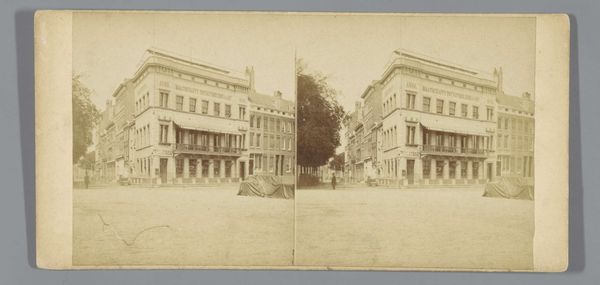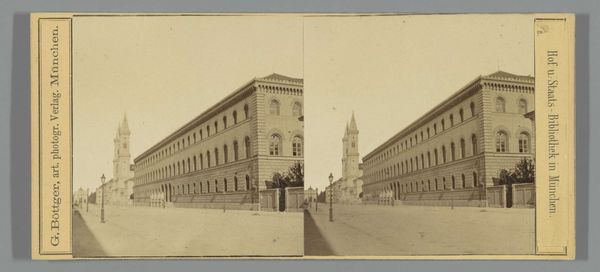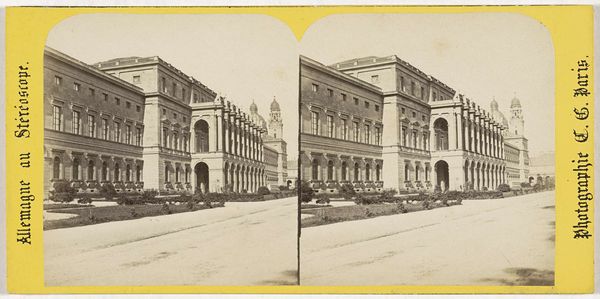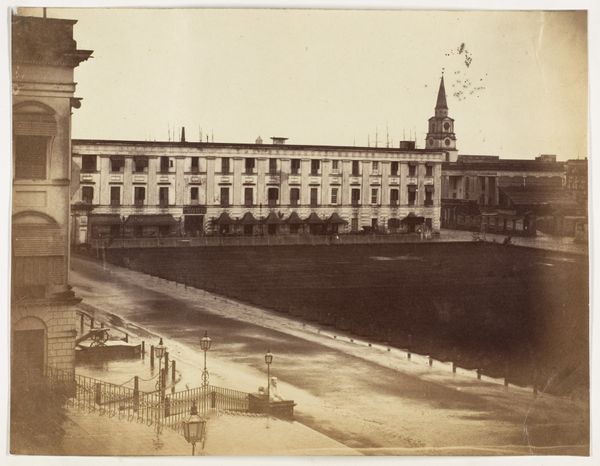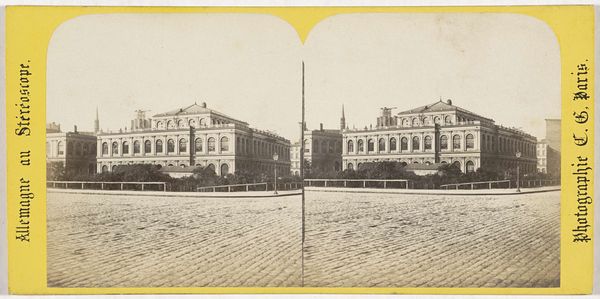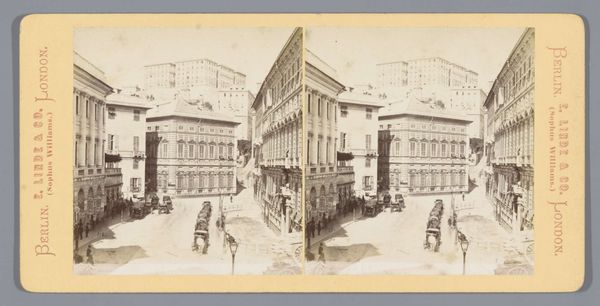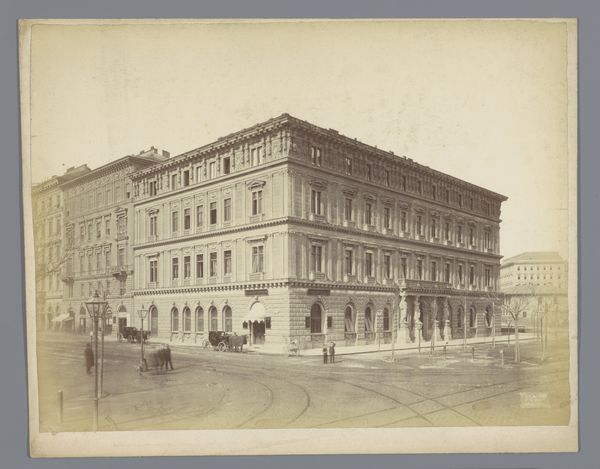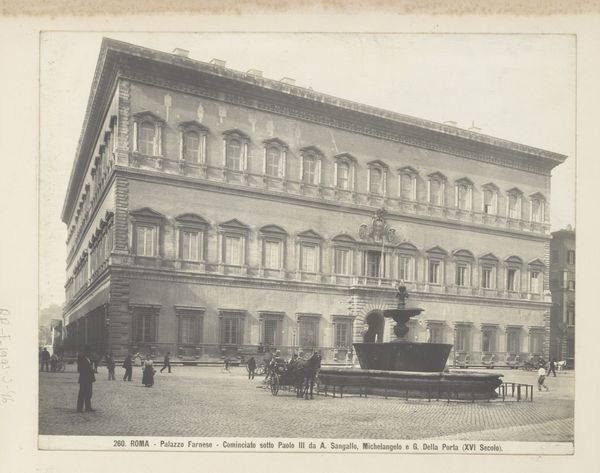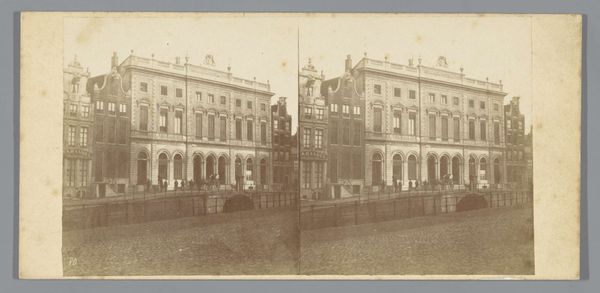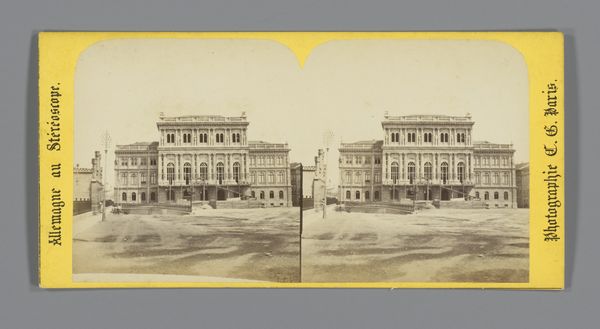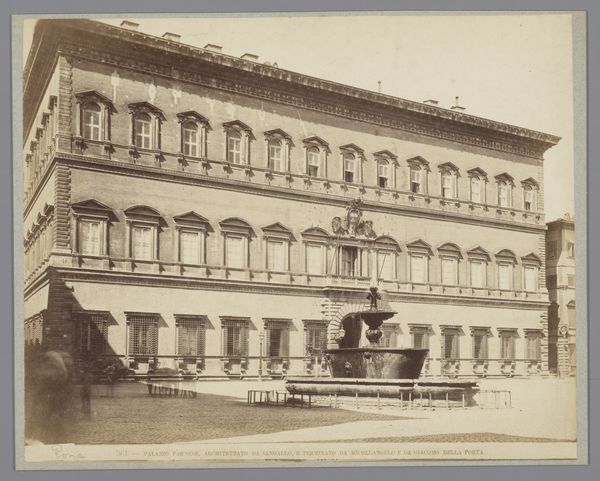
print, daguerreotype, photography
# print
#
daguerreotype
#
photography
#
cityscape
#
building
Dimensions: height 85 mm, width 175 mm
Copyright: Rijks Museum: Open Domain
Curator: This stereoscopic daguerreotype print, dating between 1878 and 1902, is titled "Alte Münze, Werderscher Markt, Berlin" by Johann Friedrich Stiehm. It captures a view of the Old Mint building in Berlin's Werderscher Markt. Editor: Wow, it feels incredibly still, doesn't it? The faded sepia tone gives it this melancholic air, like a half-remembered dream of a bustling city. Even the shadows seem frozen. Curator: Indeed. And note how the artist employed the daguerreotype to catch incredible architectural detail, yet softening the harsh urban feel into something almost ghostly and romantic. See how those classical building facades almost look stage sets? Editor: Exactly! The architecture definitely dominates. I mean, buildings represent order and structure but their repetitive windows... they could hint at confinement and bureaucracy. Are those figures standing in front symbolic? Like bystanders to grander historical forces. Curator: Fascinating point. Figures frozen in place can often denote how much a building and its purpose dictated or governed public life and commerce in burgeoning cities. The old Mint in that era wasn't merely a building. Editor: You're right! It's more than bricks and mortar—it's about economics, societal status, trust in governments. So a building that manages and oversees money directly shapes those elements. Did the Mint even become some potent representation of Imperial power? Curator: Perhaps. By then, photography served as both document and declaration. Presenting not only city scenes but a grand Imperial capital. In those classical building facades one can appreciate the solidity and status which a rising Berlin so wanted to project. Editor: So it’s a visual encoding of ambition. Knowing its place in the timeline helps it reverberate now. These solid facades are starkly against current Berlin. Curator: Precisely. Stiehm gifts us not only a window onto a specific time but a lens through which we view themes of civic identity itself, cast, fittingly enough, in almost coin-like, historical hues. Editor: Absolutely. It makes you contemplate what future archaeologists, maybe armed only with Instagram pictures, might make of *our* values and priorities!
Comments
No comments
Be the first to comment and join the conversation on the ultimate creative platform.
